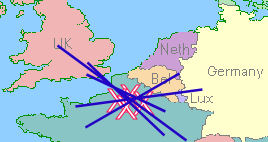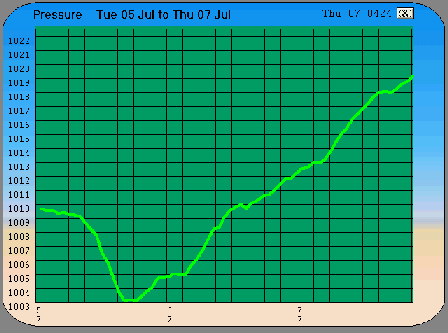-
Tropospheric Ducting
Observation
This propagation produces strong constant signals with minimal fading. These signals can remain present for hours.
Science
This mode is caused by a temperature inversion. A temperature inversion is when the air above is hotter in temperature than the air below
Scenario 1 Scenario 2 Upper Troposphere Upper Troposphere Warmer & Reduced Humidity Normal Temp Colder & Increased Humidity Warmer & Reduced Humidity Warmer & Reduced Humidity Colder & Increased Humidity (Fog) Ground Level Ground Level It has been noted that relative barometric pressure needs to be above or equal to 1020 hPa for tropo to appear
-
Sporadic E
Observation
The signals reflected via the E layer often are over in a matter of minutes. These E signals build into a strong signal and then fade back as quickly as they arrived.
The science in the section is based on observations of patterns of external influences which might be triggering sporadic E
Science
Noteable Sporadic E times during May to Sep in the day are:
- 08:00 - 10:00
- 12:00 - 14:00
- 17:00 - 19:00
Can be triggered by intense thunder storms. The mid point between 2 DX stations is often where the thunder storm is. In the image below X's marks the thunder storm activity

Can be triggered by a sudden rising of barometric pressure. Sudden rising such as a difference of around 20 hPa in 2 days.

Can be triggered 24 hours later by an Earth facing C class solar flare
Seems to also be better when there are no Sun spots
Seems to happen within a couple of hours of a solar flare
Seems to happen when there has been several days of no solar activity and suddenly a sun spot with crackling magnetic fields appear over the edge of the sun
Waves of ionisation across Europe caused by solar flares seems to result in Sporadic E
-
Aurora E
Observation
Signals are similar in characteristics to Sporadic E except the signals flutter in strength as apposed to fading in/out
Science
Solar flares from the sun! energising the E layer
-
Tropospheric Links
-
Sporadic E Links
-
Aurora Links